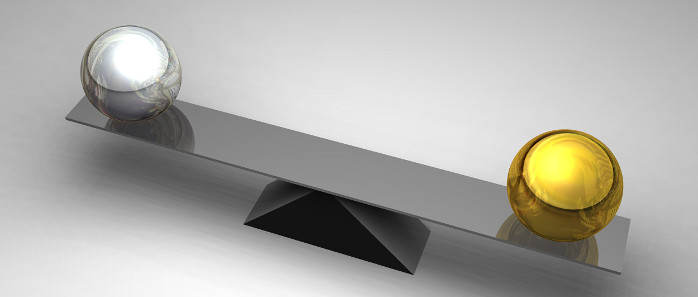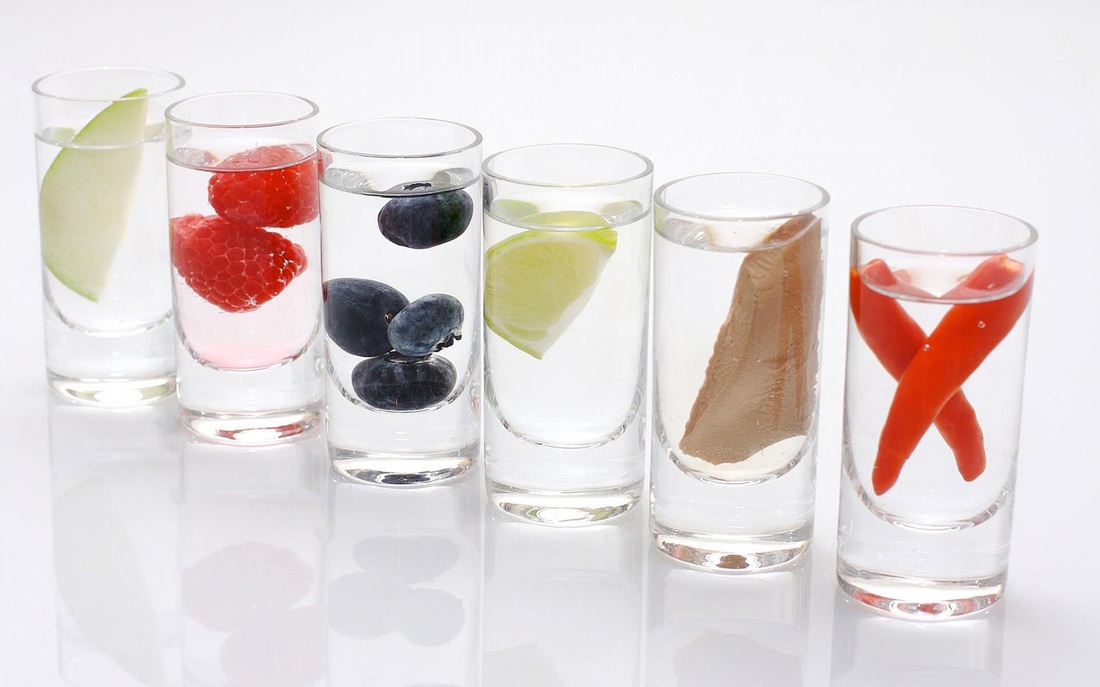n
Does the Pareto principle apply to wine? I believe it does in a very simple yet profound way. One of the major challenges for the beginning and novice taster (much less the more experienced student), is recognition and memory of a myriad of aromas and flavors found in wine, and connecting those aromas/flavors to specific grapes and styles of wine. I’ve come to believe that there are about two dozen aromas/flavors that appear in most wines. If that’s the case—and I’m calling the Pareto principle into play here—then developing a good working memory of the components in this subset would aid the beginner/novice immensely in navigating through practically any wine.
I call these common aromas and flavors the Basic Set—the two dozen or so most common aromas and flavors found in a majority of all wines. I’ve found that working on one’s memory of these aromas can improve recognition of them in wine and ultimately improve one’s tasting ability, in some cases considerably.
Here are the components of the Basic Set, the aromas and flavors found in most wines. Keep in mind that the intent of the list is not to carve anything in stone but to merely serve as a vehicle for learning. Thus the list and its components can always be altered as needed.
Green apple: acidic and also a bit tannic for me in terms of the texture of the skin; found in many white wines.
Red and/or yellow apple: huge difference between green and yellow apple; more sweetness, mealy texture, and less acid in the latter.
Pear: always lumped together with “apple” when describing white wines but dramatically different in terms of texture, flavor, and acidity.
Lemon: remarkably sour and for me the most acidic of all the citrus fruits. Think Chablis.
Lime: not as acidic as lemons. It’s hard for me to think of limes without seeing a huge bright image of them. More on that later. Makes me think of margaritas as well.
Orange: with orange my thinking moves away from many of the cooler climate wines (Chablis, Sancerre) and to semi-aromatic grapes like Albariño and Alsace Pinot Gris. And nothing rhymes with orange.
Pineapple: common tropical fruit found in Riesling and other semi-aromatic grapes.
Banana: ditto; Riesling, Muscat, Viognier, and other semi-and fully aromatic grapes. Also makes me think of carbonic maceration and Beaujolais Villages.
Peach: both white and yellow; Riesling, Muscat, Gewurztraminer, and others.
Apricot: same as above; also reminds me of various botrytis wines.
Red Wines:
Black cherry: the common denominator fruit for red wine—especially the Cabernet universe.
Blackberry: a touch more acidity than black cherry but still a common fixture in warm climate, thicker-skinner red grapes.
Sour red cherry: a fixture in cooler climate thinner-skinned grapes such as Pinot Noir and Sangiovese. Really sour and accompanied by high acidity and usually a complete lack of residual sugar. Think Burgundy and Chianti Classico.
Red raspberry: similar to red cherry but not as high in intensity—but still tart. Sonoma Coast and cool climate Australian/New Zealand Pinot Noir.
Cranberry: sour and tannic both. Makes me think of young Nebbiolo.
Raisin/prune: important for recognizing grapes that ripen unevenly including Zinfandel and Syrah. Raisin and prune also make me think of Italian passito wines such as Amarone.
Non-Fruit:
Roses: one of my favorite aromas in the universe—and very commonly found in red wine.
Violets: a fixture in Cabernet family grapes/wines.
Mint/eucalyptus: one of the hallmarks of red wines from Australia and California to a lesser extent. Think Vick’s VapoRub.
Bell pepper (pyrazines): one of the most critical aromatics on the entire list. One simply must be able to recognize pyrazines in order to identify Sauvignon Blanc in one of many forms as well as Cabernet family red wines.
Black pepper/white pepper: like bell pepper above, a vitally important aromatic in both white (Grüner Veltliner) and red wines (Syrah, Zinfandel, and more).
Oak Indicators:
Vanilla: like pyrazines for Sauvignon Blanc, it’s vital for the student to be able to recognize oak usage in any wine much less then difference between oak and phenolic bitterness in white wine. Vanilla is the most common oak aroma and much stronger in American oak vs. French or other kinds of oak.
Cinnamon: another common oak aroma/flavor in white or red wines and the result of the barrel having been toasted over an open flame. Think Red Hots candy.
Cloves: similar to above. Makes me think of mulled wine.
Toast: other than vanilla the most common oak aromatic. Think … toast!
Inorganic and Organic Earth:
Chalk: a common mineral aroma/flavor found in classic cool climate European whites including Chablis and Sancerre.
Mushroom & forest floor: makes me think of any number of classic Old World wines including red Burgundy, Bordeaux, Brunello di Montalcino and many more.
That’s the list. Work on your memory of all of the above and your ability to recognize any of the aromas/flavors in a glass of wine will improve dramatically. But how? Odds are as you read through the list just now you brought up internal images in your mind’s eye of your own life memories of each fruit/spice/etc., as a way to recall each aroma. I’ve written many times previously in the blog that olfactory and taste memory are highly visual. We shouldn’t be surprised at the image/olfactory connection. After all, we learn practically everything else visually. But it’s still a disconnect for most beginning students because the image/smell memory connection is not widely written about much less taught. Most people arrive at it unconsciously after a great deal of repetition and are completely unaware of how they remember given smells and tastes. Now you know.
Exercise
To work on your memory of the components of the Basic Set we’ll use the natural image/smell memory connection and submodalities–the structure of your internal images. To do so we’ll use your memories of the following aromas/flavors:
- Fruit:
- Lemon
- Lime
- Green apple
- Non-Fruit
- Roses
- Vanilla
- Mushroom/earth
With each of the aromas above take the internal image and intensify the memory by do the following:
a. Make the image (or movie) larger
b. Make the image closer
c. Make the colors brighter
d. Intensify any taste/flavor memory associated with the memory by making the fruit or whatever sweeter, more sour, more bitter etc.
Practice! A bit of repetition can dramatically improve your memory of the basic aromas/flavors and as well as enable you to recognize even trace amounts in a glass of wine.
More on the Basic Set
I wrote an entire post on the Basic Set some time ago with more detailed instructions and exercises. It can be found at:
http://www.timgaiser.com/blog/the-beginning-taster-challenges-and-strategies-part-ii-tools-for-developing-olfactory-and-taste-memory
Bravo Pareto!
nn


